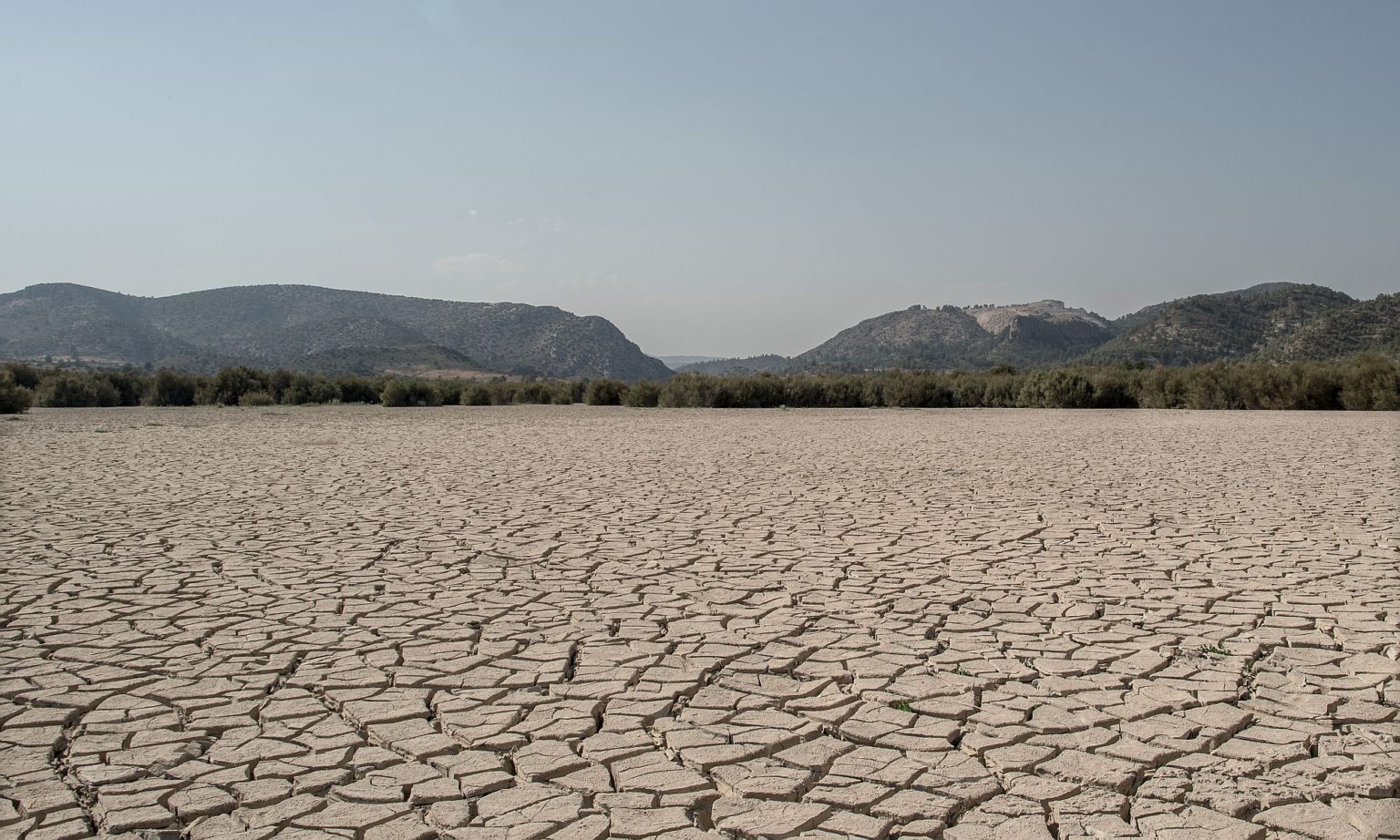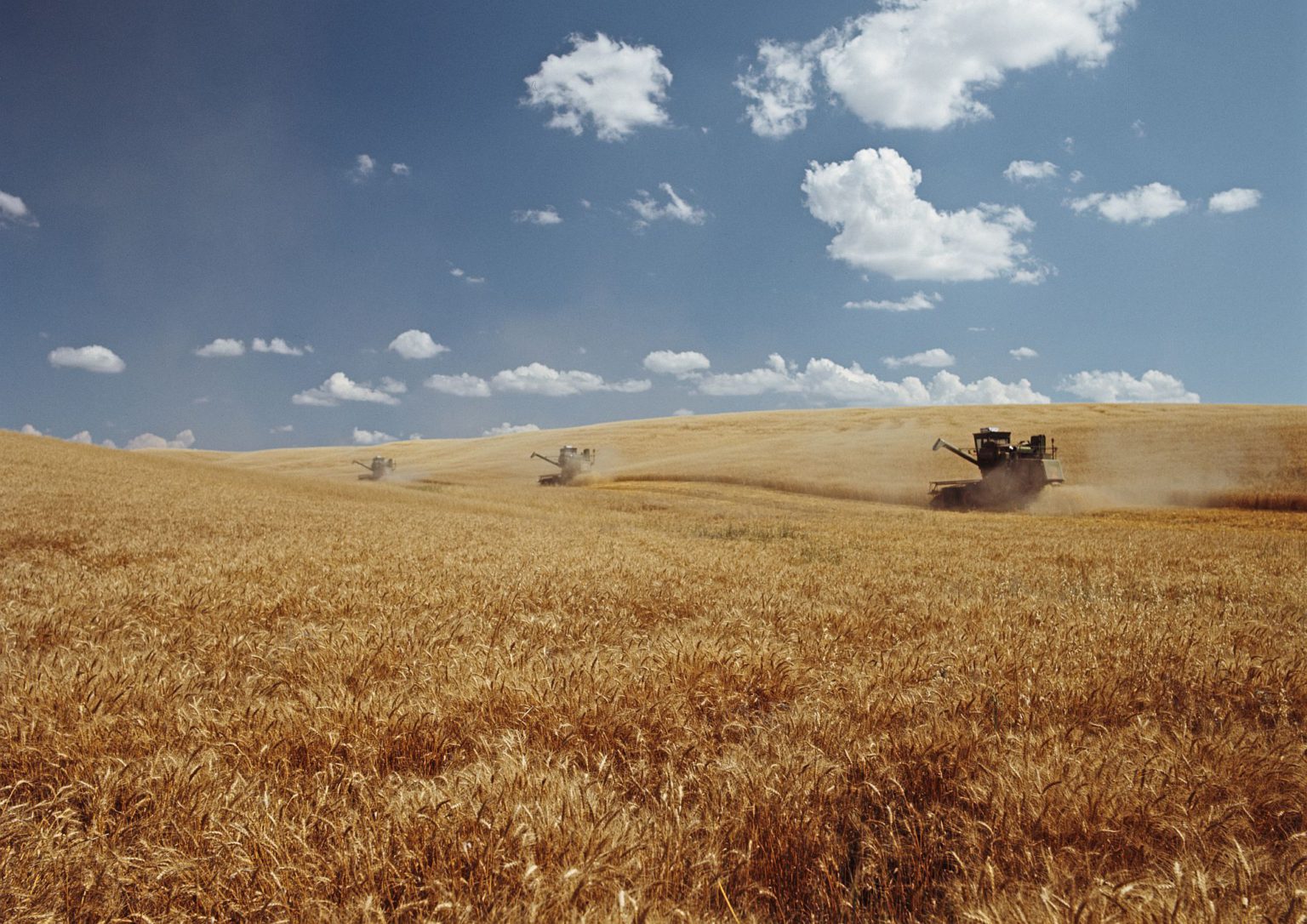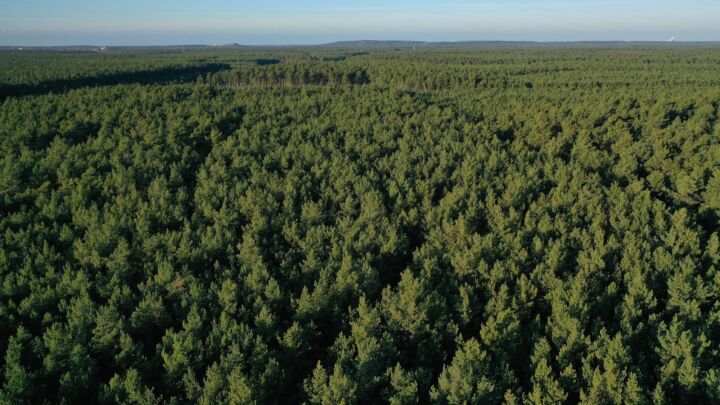
Long-read
The long history of eco-pessimism
Climate change isn’t the first eco-apocalyptic idea, and it won’t be the last.
In December last year, veteran naturalist and broadcaster David Attenborough warned attendees at the United Nations climate-change summit that the ‘collapse of our civilisations and the extinction of much of the natural world is on the horizon’.
This pronouncement was very much in keeping with Attenborough’s long-standing neo-Malthusian views, from his insistence that he has ‘never seen a problem that wouldn’t be easier to solve with fewer people, or harder, and ultimately impossible, with more’, or his fondness for heterodox economist Kenneth Boulding’s saying that ‘anyone who thinks that you can have infinite growth in a finite environment is either a madman or an economist’.
Attenborough’s remarks generated some pushback, both on the grounds that not even the IPCC predicts such a dire outcome, and that his warning of imminent catastrophe is at odds with the positive trends observable in public health, climate, reforestation and other environmental data. Critics could also have pointed out that warnings of incoming climate apocalypse are much older than the global cooling scare of the 1970s. As the biogeographer Philip Stott observed, ‘every age has viewed climate change cataclysmically, as retribution for human greed and sinfulness’.
Needless to say, climate Armageddon is just one among many predicted environmental catastrophes that somehow failed to materialise. Indeed, such prophecies of doom have almost always accompanied the development of disruptive technologies over the past two centuries.
Why is it, then, that 93-year-old Attenborough, a man who has lived through an endless stream of failed eco-catastrophic pronouncements, remains so enamoured of them despite all the evidence to the contrary? What makes this especially puzzling is that he came of age during a period dominated by a ‘global soil erosion’ scare, which lasted roughly from the time of his birth to the turn of the 1960s. This now largely forgotten episode is well worth revisiting. First, because it shows how, like today, the eco-catastrophist narrative can dominate academic and policymaking discourse, and grip parts of the public imagination. And secondly because it illustrates how a minority of dissenters who believe in technological progress can – and often do – turn out to be right against a powerful and influential group of pessimists.
The global soil-erosion scare
In the words of agricultural economist Dennis Avery, soil erosion ‘has been threatening since man scratched the first seedbed with a stick’ (1). Indeed, population growth, deforestation and soil erosion form the main backdrops of the oldest known written story, The Epic of Gilgamesh. Plato later lamented that Athens’ backcountry, whose hills had once been ‘covered with soil’, the plains ‘full of rich earth’, and the mountains displaying an ‘abundance of wood’, had been turned, after years of abuse, into a landscape that could ‘only afford sustenance to bees’, because all the ‘richer and softer parts of the soil [had] fallen away, and the mere skeleton of the land [was all that was] left’.
In the middle of the 19th century, the American naturalist and diplomat George Perkins Marsh observed in his classic Man and Nature that, besides historical records that documented the past fertility of the regions stretching from Spain and North Africa to Mesopotamia and Armenia, the ‘multitude and extent of yet remaining architectural ruins, and of decayed works of internal improvement’ all pointed towards ‘former epochs [when] a dense population inhabited those now lonely districts’. It could only have been sustained, he concluded, ‘by a productiveness of soil of which we at present discover but slender traces’.
Throughout history, land mismanagement sometimes resulted in localised soil depletion and compaction, siltation, waterlogging, salinisation, gullying and, in extreme cases, desertification. By the first decades of the 20th century, a growing number of writers deemed such problems significant enough to threaten humanity’s very survival. This fear played into the agenda of a few powerful constituencies. In America, it could justify New Deal programmes and their accompanying ‘gentle rain of checks’ to address Dust Bowl problems. Elsewhere, it appealed to eugenicists fearful of overpopulation, and colonial administrators keen to control native populations’ agricultural practices, such as cattle-grazing and shifting cultivation. As one British colonial administrator put it a century ago:
‘A child is not allowed to play with fire, although it may very much like to see the flames; in the same way the British people, as locally represented by the Gold Coast Government, cannot allow the inhabitants of the district to play fast and loose with their priceless treasures, the African forests, well knowing that the country will be permanently injured thereby.’
In a 1939 work, The Rape of the Earth: A World Survey of Soil Erosion, British writers Graham Vernon Jacks and Robert Orr Whyte wrote that, ‘as the result solely of human mismanagement, the soils upon which men have attempted to found new civilisations are disappearing, washed away by water and blown away by wind’. They continued: ‘[The] destruction of the Earth’s thin living cover is proceeding at a rate and on a scale unparalleled in history, and when that thin cover – the soil – is gone, the fertile regions where it formerly lay will be uninhabitable deserts.’

In 1948, ecologist William Vogt published his Road to Survival, which was to become the biggest-selling environmentalist book, until the publication of Rachel Carson’s Silent Spring in 1962. Vogt argued that, with rare exceptions, man had ‘taken the bounty of the earth and made little or no return’. Where he had not lost water and soil, he had ‘overgrazed and overcropped, and by the removal of animals and plants, [had] carried away important soil minerals, broken down the all-important soil structure, and generally exhausted the environment’. Civilisations were at risk, because ‘hundreds of millions of acres of once rich land’ had become ‘as poor as or worse than – the city gardener’s sterile plot’. Population growth and wealth creation had in the end delivered ‘[d]espoiled forests, erosion, wildlife extermination, overgrazing, and the dropping of water tables’.
That same year, Vogt’s close friend, the conservationist Henry Fairfield Osborn Jr, published his book Our Plundered Planet. There he warned that environmental destruction would soon prove even more deadly than the Second World War, for ‘man’s destructiveness has turned not only upon himself but upon his own good earth – the wellspring of life’. Osborn deemed American agricultural production one ‘great illusion’, because the ‘story of our nation in the last century as regards the use of forests, grasslands, wildlife and water sources is the most violent and the most destructive of any written in the long history of civilisation’. Man’s ‘avoidance of the day of atonement that is drawing nearer as each year passes’, Osborn continued, meant he had to learn ‘to work with nature in understanding rather than in conflict’. Failure to change threatened ‘man’s very survival’. Humanity had ‘now arrived at the day when the books should be balanced’.
Another prominent eco-catastrophist voice at the time was the Indian academic, population-control activist and public servant Sripati Chandrasekhar, who commented in 1954 that the North American agricultural surpluses had been ‘obtained at the cost of the longevity and perhaps the very life of the land itself’. Throughout most of the world, ‘forests are not being used on a sustained-yield basis; they are being inexorably wiped out. Grasslands almost everywhere are being overgrazed. Water tables are falling; rivers are overflowing and changing their courses. Nature is losing her balance. Man’s ignorant and destructive hand has set the ball of disaster rolling.’
The optimists strike back
Postwar eco-pessimists, such as Vogt, Osborn and Chandrasekhar, enjoyed much political support. They were nonetheless severely criticised by some of their contemporaries who, a few decades later, would turn out to have been right all along.
Osborn and Vogt were attacked by an anonymous writer in Time magazine a few months after they published their books. (The writer was likely USDA soil scientist Charles Kellogg.) According to the reviewer, Vogt’s assertions about soil had by then been totally discredited by ‘real agricultural scientists’, who considered ‘every main article of the neo-Malthusian creed’ as ‘either false or distorted or unprovable’. Arguing that an acre of soil is limited in terms of its production capacity, or biotic potential, ignored the fact that humans were capable of improving it. Indeed, only individuals who had turned their back on progress could accept the notion that they would have to adapt to soil patterns for survival. The reviewer also refuted the notion that the productive capability of the world’s cultivated lands would continue to fall due to erosion and exhaustion.
As Philip Stott observed, ‘every age has viewed climate change cataclysmically, as retribution for human greed and sinfulness’
While Vogt was correct to point out that humans did not maintain soils as diligently as perhaps they could have, he had ignored tremendous recent progress in terms of improving soil quality, in the process delivering increased production capabilities. There were only a few iota of truth in Osborn’s and Vogt’s ‘errors, prejudices, mysticism and reckless appeals to emotion’. Their ‘static’ philosophy, however, gave ‘great comfort’ to state planners, who believed that there were only so many resources available which had to be strictly controlled. The result, of course, was that ‘any group ruled by this static idea will turn its back on progress and become socially reactionary’.
In another scathing review, agricultural economist Karl Brandt described Vogt’s take on soil erosion and overpopulation as ‘a forceful piece of propaganda for the no longer entirely new idea that soil-conservation practices by farmers are needed on many parts of the earth, and for Margaret Sanger’s idea that mankind must be saved by birth control’. Ignoring all contrary evidence, Vogt had produced a ‘truly amazing book, not for the knowledge or wisdom it offers the reader, but for its psychological appeal, the emotional reactions it generates, the laudatory reviews it gets from literary critics, and its phenomenal sales’. People knowledgeable about ‘farming, land utilisation, or the economics of resources’ who have ‘any critical faculty or plain common sense will be moved to anger by it and may want to throw it into a wastebasket’.
Brandt also chastised Vogt for needlessly blaming ‘the old stand-bys of all left-wing radicals: the white man; the rugged individualist; the free-enterprise system; the capitalistic system; the lumberman who uses an axe; the railroads which contribute the Dust Bowl and the destruction of the forests to modern living’. To these, Vogt had also added ‘the farmers who use moldboard ploughs; the people who produce children and rear them; and the doctors, chemists, and biologists who reduce mortality and thus help families in overpopulating the world’. Brandt urged the writing of as many rebuttals as could be mustered because ‘the basically unsound main thesis of impending catastrophe as the result of universal abuse of land resources and of rapid overpopulation has profoundly impressed even men of otherwise good judgment’.
The University of Delaware geographer Earl Parker Hanson was equally vociferous in his book, New Worlds Emerging, a self-described attack on the ‘Jeremiahs of geography, sociology and economics’, who disdained all past progress and called instead for conservation on a large scale. Denouncing the erosion ‘hysteria’ into which the modern world was ‘being stampeded’, Hanson called for ‘energetic economic development’, and argued that to ‘proclaim a numerical limit on the world’s arable lands, while decrying the technical advances with which that limit can be stretched by many millions of acres, is to turn one’s back on reality’.
Another critical take on Vogt was penned by Merrill K Bennett, then executive director of Stanford University’s Food Research Institute. Looking back five decades, a time when ‘world population growth was enormous’, Bennett saw marked ‘evidence of improvement in per capita food supplies’, and argued that pessimism on the issue was ‘not compelled on the basis of historical fact or logic’. As for land management, despite some localised problems and the dramatic rhetoric of popular writers, demonstrable improvements were ‘widespread’. Indeed, he argued that a ‘large part of the arable soils of the world are made better by good farming than they were naturally’ – that is to say, they are made better through technological developments of all kinds that increased yields, conserved soils, reduced spoilage and delivered other benefits. Based on the available evidence he inferred that, ‘in all probability’, the ‘point of maximum productivity will be shifted upward as time passes because technological advances will be made, even if we cannot predict either the degree or the pace of advance’. To follow the pessimists’ advice to slow or halt economic and population growth, however, would ‘hamper invention, stifle capital accumulation, hinder investment domestically and internationally’, and thus ‘retard the general economic development, one aspect of which is improvement of national diets’. He also believed that ‘time may prove today’s pessimists to have been wrong, as with the pessimists of yesterday’.

In the English adaptation of his classic The Geography of Hunger (1952), Brazilian physician and geographer Josué de Castro denounced Vogt’s call for population control until the ‘born-to-starve disappear from the face of the earth’. The true road to survival, he argued, required ‘the effort to make everybody on the face of the Earth productive’. Like other anti-Malthusians before him, de Castro made the case for scientific advances and illustrated future possibilities by documenting how, among other achievements, poor Japanese immigrants, working ‘thankless soils’, had purchased ‘for nearly nothing’ degraded coffee-growing land in and around Sao Paulo, and developed a ‘magnificent green belt’ that was then contributing much to the produce supply of the Brazilian industrial heartland.
The world, de Castro hoped, would not follow Vogt down the road to perdition. Vogt’s creed ‘preaches that the weak and the sick should be left to die, which would help the starving to die more quickly, and which even goes to the extreme of suggesting that medical and sanitary resources should not be made available to the more miserable populations’. Such policies, he wrote, only reflected ‘the mean and egotistical sentiments of people living well, terrified by the disquieting presence of those who are living badly’.
In hindsight, of course, Brandt, Bennett, Hanson and de Castro’s optimism was vindicated. But the eco-pessimists still had an impact in the shape of coercive and often brutal population-control policies and programmes that diverted time and resources away from developing better ways of doing and producing things.
Numerous alarmist academics, policymakers and interest groups revived the fear of soil erosion in later decades, in Canada, the US and elsewhere. They were again proven wrong. Needless to say, similar arguments, are still very much with us today, despite continuing improvements in agricultural yields.
The persistence of eco-pessimism
People react differently to the repeated failure of apocalyptic environmental predictions. Present-day conservatives and individuals who believe in material progress, especially if they have witnessed the failure of environmental predictions in the past, typically become more jaded over time. On the other hand, today’s left, and especially its youth wing, seemingly requires a constant supply of bad environmental news to vindicate its anti-capitalist worldview. Not that being on the left or right necessarily determines one’s attitude to environmental doom-mongering. Up to the late 20th century, environmentalism was largely pursued by aristocrats, the leisure class and reactionary and anti-liberal movements. Most of the traditional and radical left typically pursued material and social betterment.
Be that as it may, several explanations have been put forward to explain the reluctance of environmental activists and sustainable-development theorists to change their minds when confronted with contradictory evidence. Without claiming any specific knowledge of, for instance, David Attenborough’s thought processes, his writings and speeches suggest that, like many biologists, he simply cannot acknowledge the fact that humanity has reached the top of this planet’s food chain by developing unique characteristics. These include everything from the ability to exchange physical goods (and the attendant division of labour) to the ability to innovate by combining existing things in new ways, which, among other things, has allowed humans to replace resources extracted from the surface of the planet (for instance, fuelwood or wool) with resources that ultimately originated from below (for instance, plastics and dyes).
At the root of eco-pessimism, then, is always a deep-seated disillusionment with technological , economic and social progress. So faith-like is the disillusionment, so ingrained is the misanthropy, that no amount of good news can dispel them.
In November 2018, Attenborough admitted he was worried that constantly ringing the environmentalist alarm bell was a bit of a ‘turn off’ for people. He was right. Not because, as Attenborough thinks, it is the wrong way to get the right message across. But because enviro-catastrophism, repeatedly refuted throughout human history, is the wrong message in the first place.
Pierre Desrochers is an associate professor of geography at the University of Toronto Mississauga, and the author of The Locavore’s Dilemma: In Praise of the 10,000-mile Diet.
Joanna Szurmak is a doctoral student at York University’s Department of Science and Technology Studies.
This essay draws in part on the authors’ book, Population Bombed! Exploding the Link Between Overpopulation and Climate Change, published by GWPF books, 2018.
Pictures by: Getty Images.
(1) Saving the Planet with Pesticides and Plastics, by Dennis Avery, Hudson Institute, 2000, p201
No paywall. No subscriptions.
spiked is free for all.
Donate today to keep us fighting.
Donate onlineTo enquire about republishing spiked’s content, a right to reply or to request a correction, please contact the managing editor, Viv Regan.







Comments
Want to join the conversation?
Only spiked supporters and patrons, who donate regularly to us, can comment on our articles.